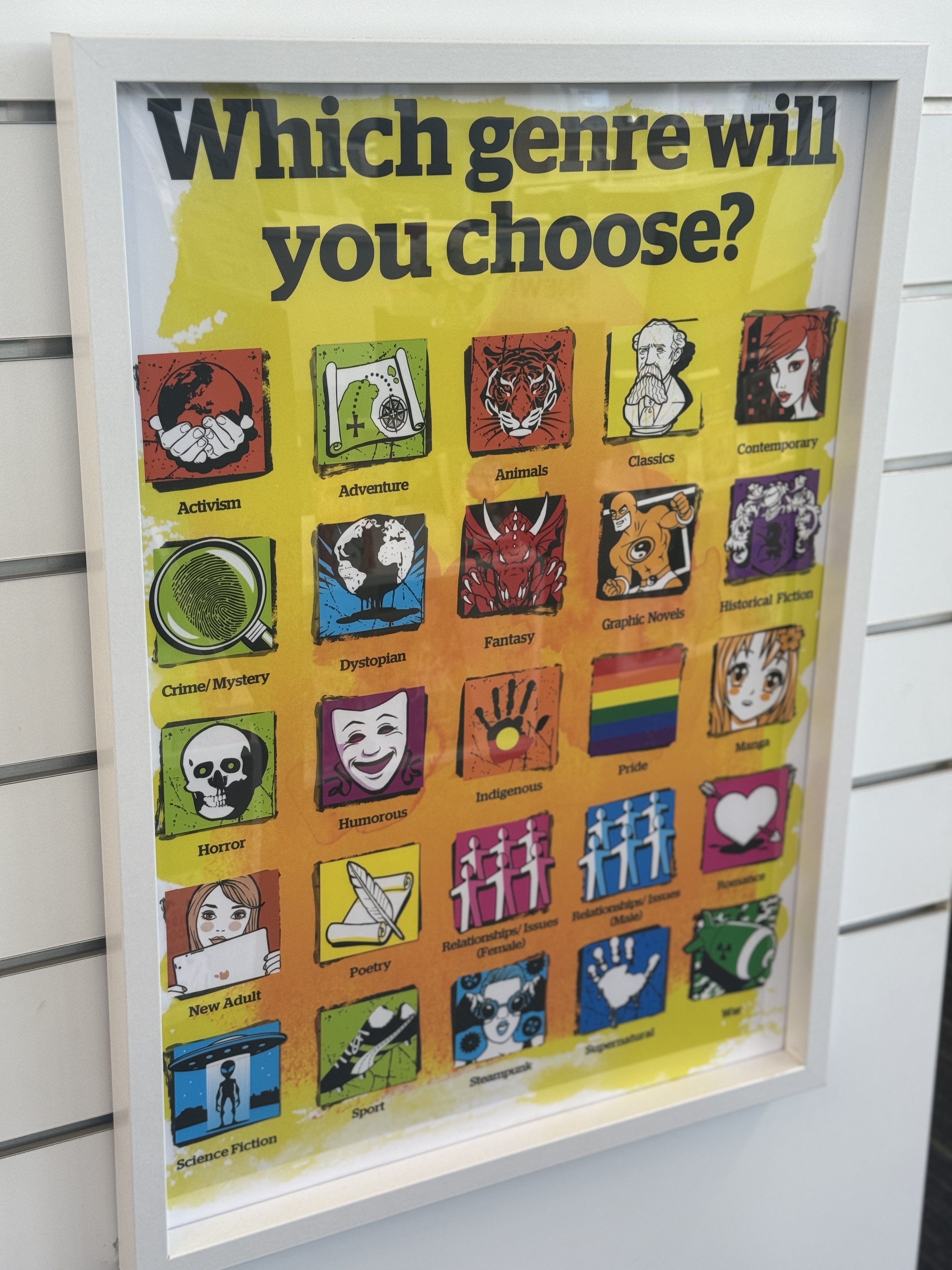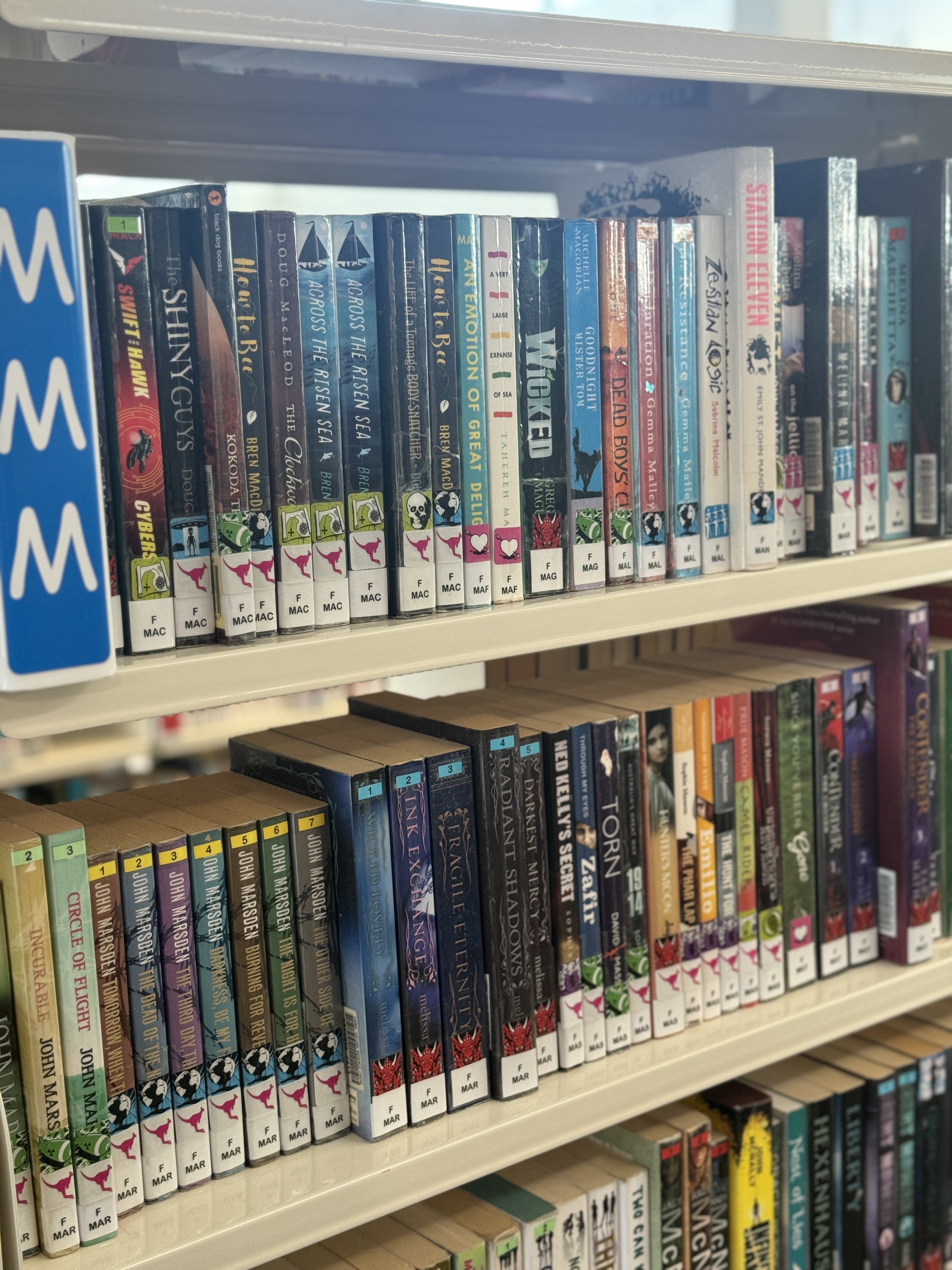Issue 130
Term 3, 2024
- Feature article
- Articles
-
- Elevate your practice at the School Library Association of New Zealand Aotearoa (SLANZA) Conference
- Tonight … I’ll be reading! a novel approach to holiday reading
- Insights from the Discovering a Good Read Survey
- Teacher librarian leadership and generative AI: An opportunity for leading innovation
- For your reference
- Regular features
Download this issue
Finding the right genrefication balance in your library
Explore the pros and cons of genrefying your school library's collection with insights from Carmel College's approach. Discover practical tips to enhance resource accessibility and student engagement.

Genrefication in school libraries improves access to collections. In this article, Jessica Finden explores its pros and cons, sharing Carmel College’s approach to organising their resources. One of the core roles of a school library and the teacher librarian (TL) is to establish and provide easy access to information within the library. Genrefication is a current focus within school libraries which aims to make access to fiction and non-fiction collections easier to navigate for students and staff members within the school community. But what happens when you are not sure if you want to genrefy? Plenty of libraries are doing it, you hear!
Here is a basic breakdown of the positives and negatives of genrefication:
Positives
- Students are able to locate materials of interest more easily (Sweeney, 2013)
- It can increase circulation and enhance reader independence (Arenz, 2019)
- Students can be exposed to resources which may have previously been overlooked (Moeller & Becnel, 2019)
- Information is often ‘genrefied’ in music, social media and streaming services, this is a way of keeping up with current trends (Moeller & Becnel, 2019)
Negatives
- It is time and labour intensive
- There is (currently) no standarised genre system to work from (Hamm, 2019)
- Space and shelving need to be considered
- Genrefication is still not widely used, using it may not provide students with a transferable skill (Sams, 2013)
Tips and tricks
- Make sure whatever you choose to go with is visually appealing
- Go through the collection and weed before beginning anything
- Be flexible, know that what you start off with will probably change by the end of the process
- You don’t need to go through a company for genre stickers, you can create your own. We liked Syba Signs because you can purchase the digital image and upload it into Oliver
Explanation of how my school has ‘genrefied’
So how can you meet genrefication in the
middle?
At Carmel College, Thornlands the library team have considered the many ways that our students access resources, in particular our fiction and non-fiction collections. Knowing that we needed to work within the confines of our current space and shelving, we knew that change had to come from the collection itself. The update of these collections has been a three-year process, which started with looking closely at the fiction collection. We were already using a mix of genre stickers on the spines and decided to provide more consistency by reducing the number of stickers and using only the Syba Signs designs.

We then went through each of our fiction collections and updated each of the genre stickers and the catalogue record to reflect the change. As the Teacher Librarian, I decide on what genre best suits each novel as it allows me to see each book we have in our library and provides uniformity around what constitutes a certain genre. Our ‘meet in the middle’ moment is that we have kept our fiction collections in alphabetical order. Students can search the shelves by author surname but clearly see which genre each of the books are. We feel that this gives students opportunities to peruse the whole collection instead of going straight to their favourite genre.
The non-fiction collection required a lot more work as it had not been updated for a number of years. Before starting, the library team went through the nonfiction collection and weeded books that were out of date/no longer relevant or in poor condition. This helped us to have a clear picture of what books we had to work with within the collection. The non-fiction collection was organised using the Dewey Decimal System (DDS) and we knew that we wanted to create more of a general ‘genrefied’ feel that the DDS wasn’t providing. This was the hard part, with over 3500 resources in our non-fiction collection we now needed to work out the best method for organising them. I’ll be honest, we changed our minds a lot. The end result was dividing the collection into two – High Interest non-fiction and Curriculum nonfiction. Within High Interest we divided the collection into nine categories that ranged from ‘Creativity’ through to ‘Sport.’ The focus was on creating topics that suited the resources we already had but would also be of interest to our students. Within the Curriculum collection we went through and sorted the resources into ‘topics’ that were studied within departments as one of the issues we had encountered was students looking for books on a certain topic and finding that they could be found across the DDS subjects. This change meant that students who were researching ‘American History’ could find everything in one section.
To make everything easy to find and shelve we purchased coloured stickers to separate the different categories in High Interest and made our own labels for the Curriculum topics. In the catalogue we added the category name as a ‘genre’ for High Interest and added the Curriculum topics into a ‘list’. This also has the added benefit of being searchable using the ‘List’ function.
Genrefiction is not a ‘quick-fix’ for libraries and takes a considered approach to fully accomplish its main goal of easier access to information for students and staff. Speaking to TLs who have gone through the process is one way of helping to decide if it is the right choice for your school. For our library, we are happy with the current compromise and the benefit of this approach is that a lot of the hard work has already been completed if we do decide to fully embrace genrefiction in the future.
References
- Arenz, G. (2019, May 13). What School Librarians Have to Say About Genrefication. ideas.demco.com/blog/what-schoollibrarians- say-about-genrefication
- Hamm, S. (2019). Why I Chose Not to Genrify the Fiction Section. Teen Services Underground. www. teenservicesunderground.com/why-ichose- not-to-genrify-the-fiction-section
- Moeller, R. A., & Becnel, K. E. (2019). “Why On Earth Would We Not Genrefy the Books?”: A Study of Reader-Interest Classification In School Libraries. Knowledge Organization, 46(3), 199–208.
- Sams, J. (2013). Why I Won’t Ditch Dewey. Elementary Librarian. https://elementarylibrarian.com/why-i-wont-ditchdewey
- Sweeney, S. (2013). Genrefy Your Library: Improve Readers’ Advisory and Data- Driven Decision Making. Young Adult Library Services, 11(4), 41–45.
